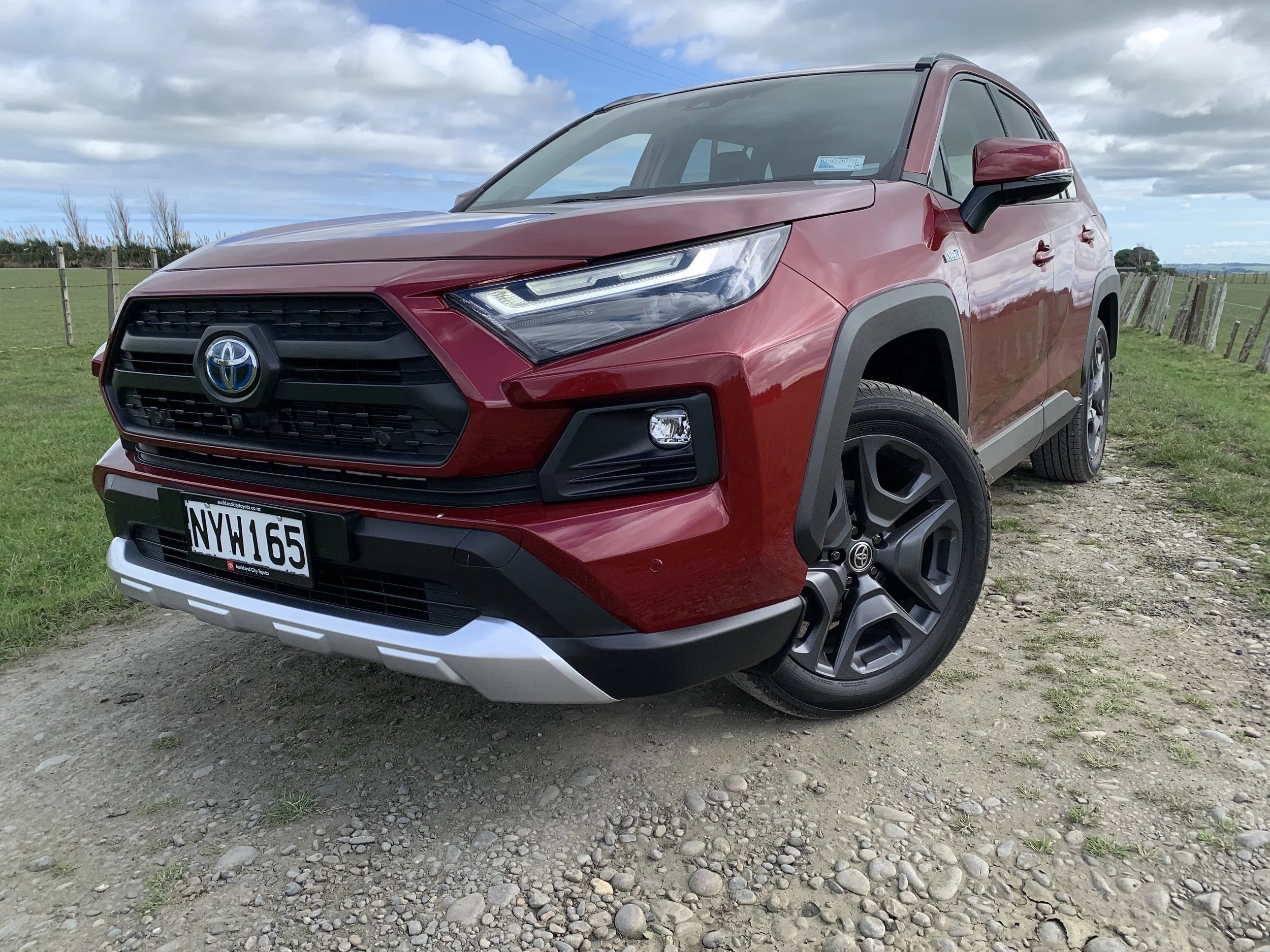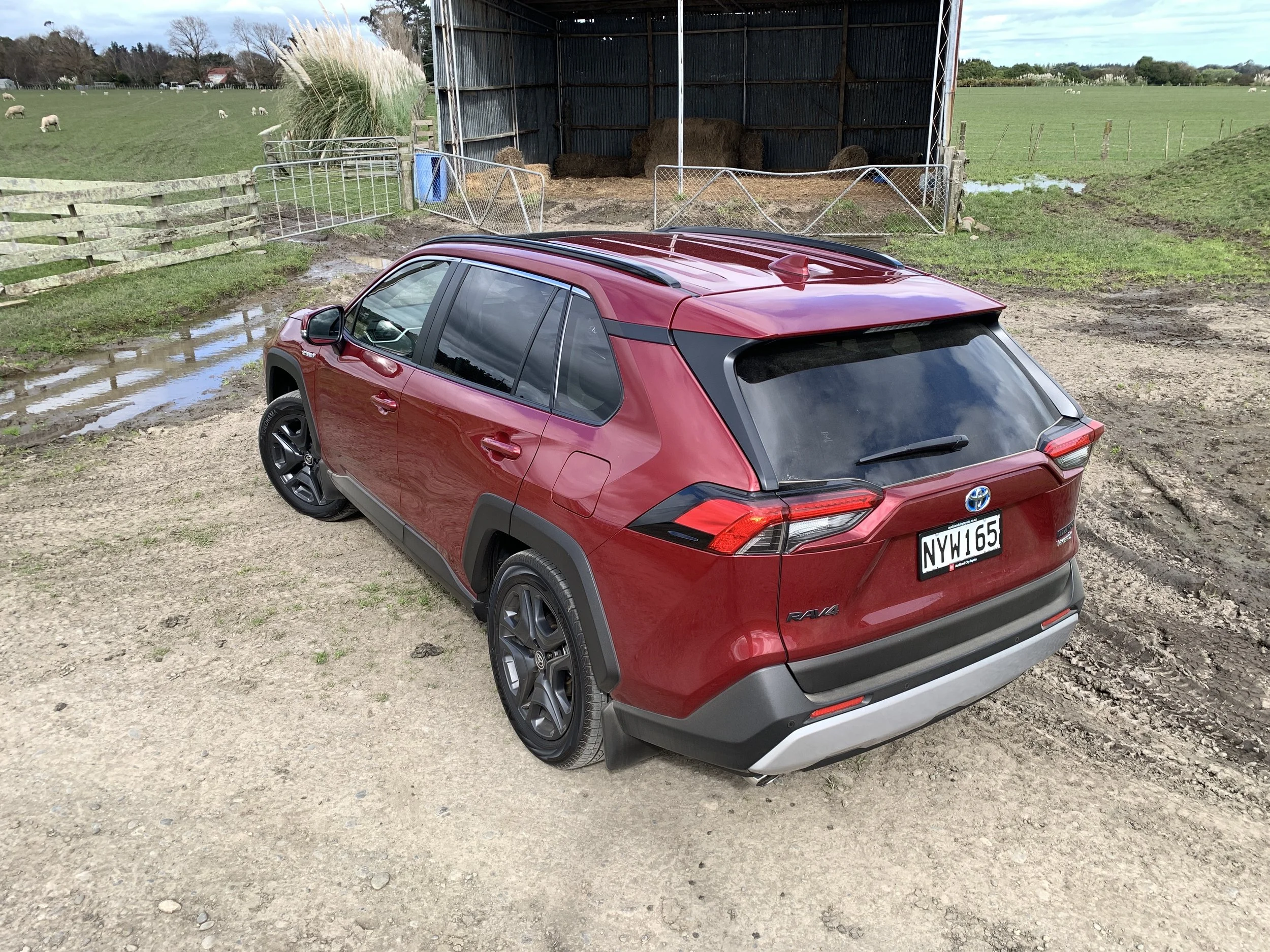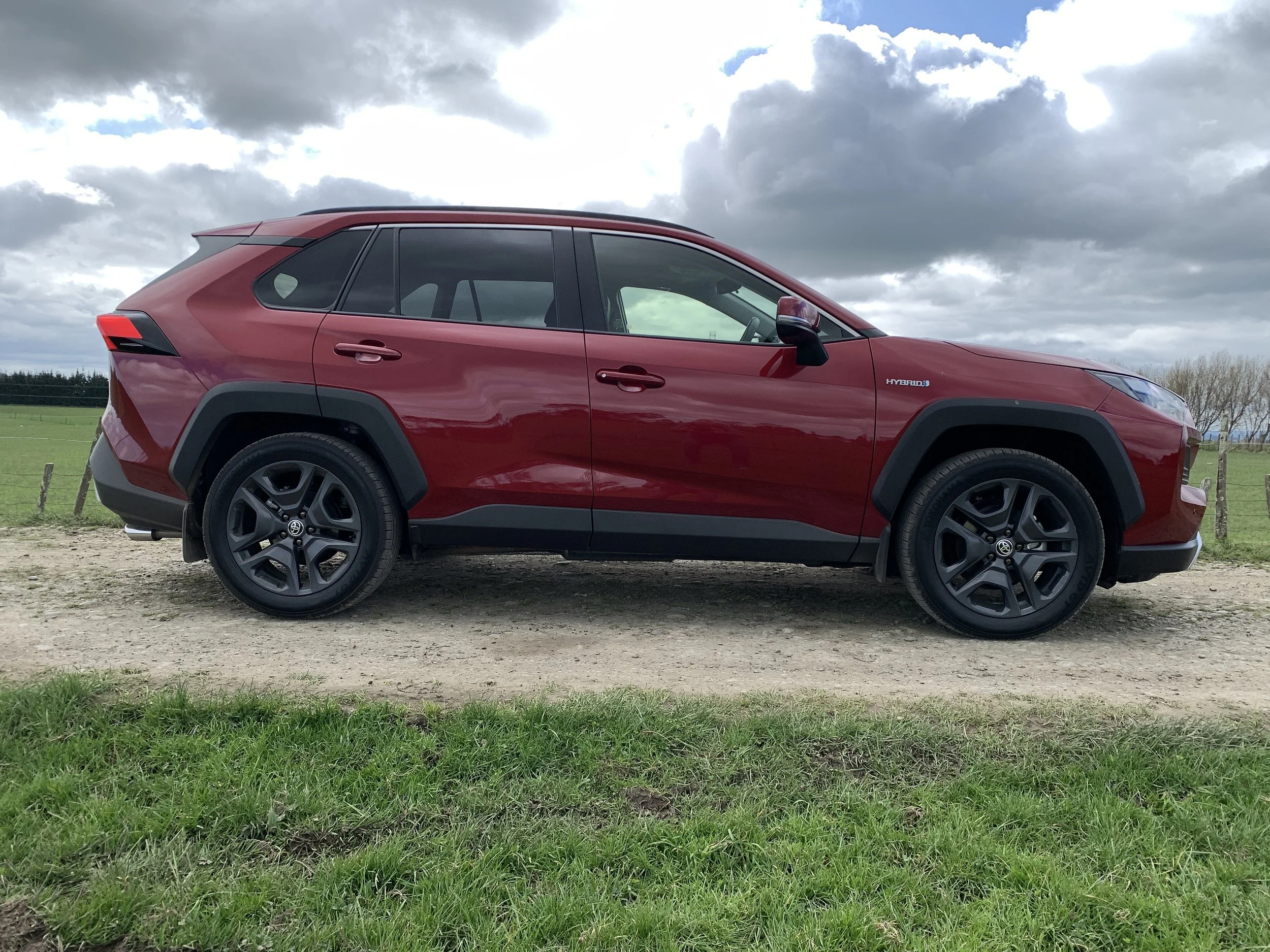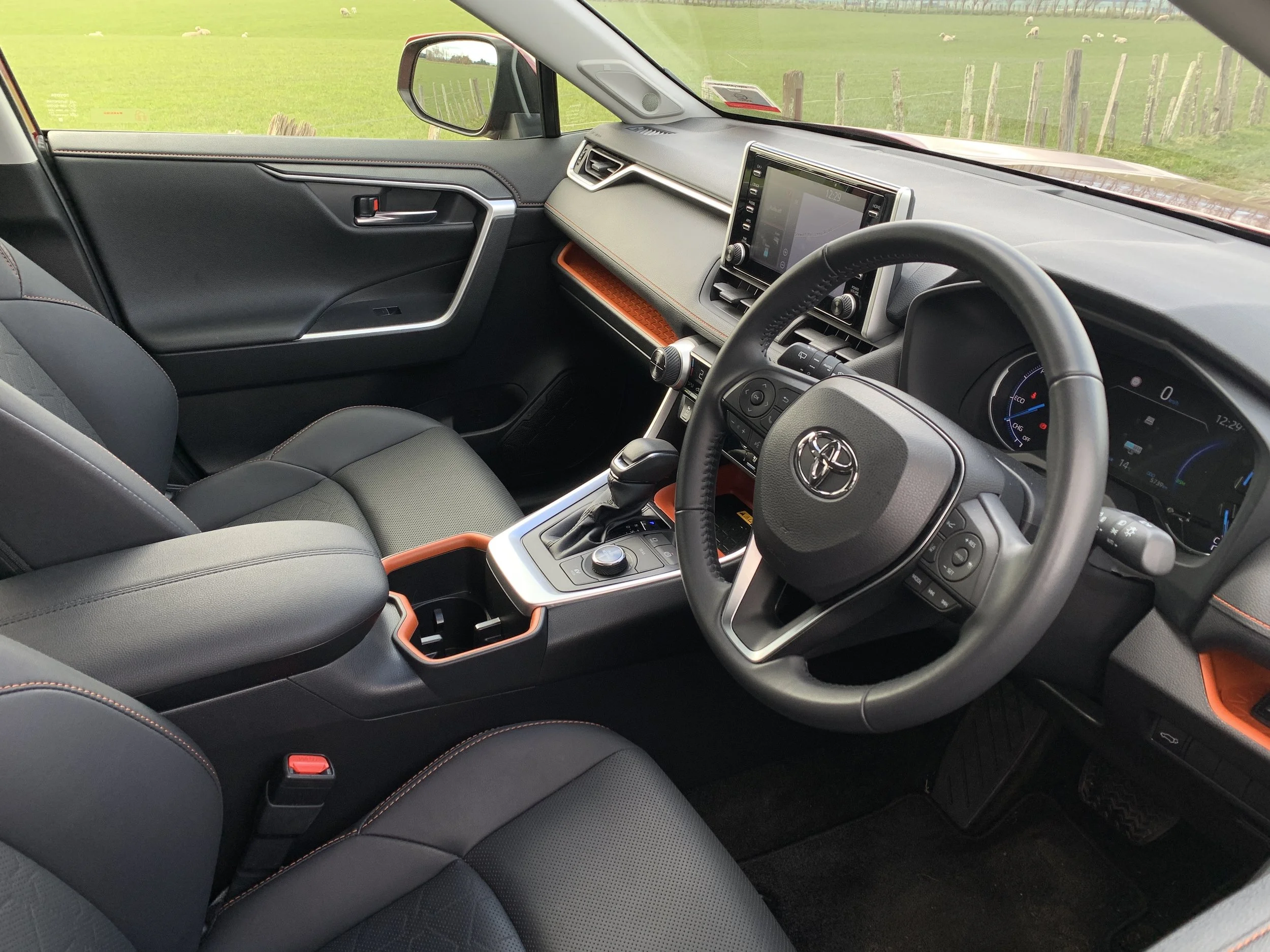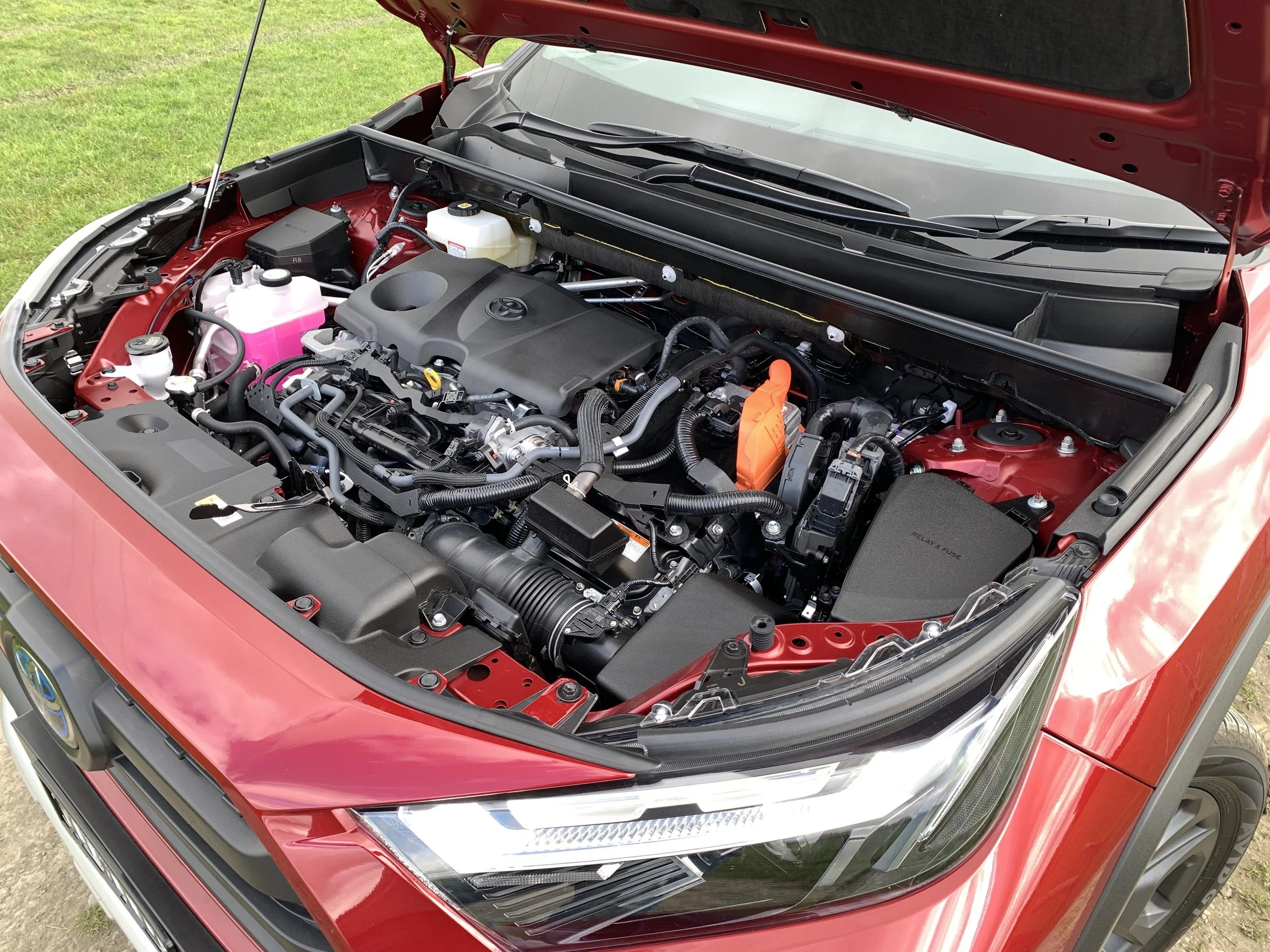Toyota RAV4 Adventure roadtest review: Tasty trail mix
/A standard RAV4 can be surprisingly adept away from the seal. How much better is one with a modest off-road package?
Price: $58,290.
Powertrain: 2.5-litre petrol-electric, 131kW/221Nm, all-wheel drive, CVT, economy 5.3L/100km, 122g/km CO2.
Vital statistics: 4610mm long, 1865mm wide, 1690mm high, wheelbase 2690mm.
We like: Comfortable drive, roomy cabin, economical, achieves modest Clean Car rebate.
Not so much: Orange interior highlights, CVT shrillness when pushed.
PERCEPTION all new car buyers instantly zero in on some kind of a sports utility vehicle or crossover isn’t quite accurate - actually, ‘just’ 52 percent of buyers do this.
The rest are going to utes and hatchbacks. There’s even some level of call for something known as a sedan. That’s a four-door car in which the luggage area is separate to the cabin proper. Apparently these were all you could get once upon a time. (yes, this too is humour).
Anyway, back to the subject in hand. The SUV market’s popularity curve has been staggering; this is a sector that kept growing even when the car market as a whole ground into stagnation last year.
The biggest level of growth has been in the compact to medium sectors, from which today’s test cars are plucked. Vehicles in that slot tend to be best-sized, specced and priced for couples and families of no more than five, preferably four. And a dog. Always a dog.
The choice within this sub-category is huge. Conceivably even if each involver sold just one model in one trim with one drivetrain choice, they’d do okay.
But that’s not how it works. The spirit of competitiveness, the heavy reliance on endless marketing research and the recognition that buying trends are often driven less by logic than whimsy … well, it’s at the point when a product that’s too sensible is almost disadvantaged.
So they’ve taken to jazzing up the flavour. More luxury, more performance, more impression of all-terrain hardiness. Whatever it takes.
The Toyota RAV4 Adventure is one direction worth considering … assuming you can lay hands on one. Getting any kind of Toyota has been an ask for some time; Japan’s No.1 has been hard-hit by coronavirus-linked issues effectively mean every popular product is has here has been subject to some kind of waiting list. The RAV4’s has been particularly long and it just keeps getting hit by production cuts at Toyota factories in Japan.
Just the other week Toyota said it might have to strip 100,000 vehicles from its planned global production (from 900,000 to 800,000) over the next three months. Even so, it is standing by its commitment to build 9.7 million vehicles through to the end of the Japanese financial year, which ends on March 31, 2023. Still, look up this car on the brand’s website and it’ll tell you orders for 2022 and 2023 are closed.
So Hybrid RAV4s are like gold. But this latest is a nugget all the same.
The Adventure variant isn’t new. It provisioned as a flagship item when the latest shape came on sale here, over a year ago. But then it provisioned with a fully petrol format, which didn’t really take off. That version has now gone off in the wilderness, bever to be seen again, and now there’s a new one holding a compass set to a new direction; Hybrid land. As Kiwis have really taken to petrol-electric Toyotas, it’s bound be on the right trail.
The blend of a Camry-shared 2.5-litre petrol engine with battery power and an E-Four AWD system – putting an electric motor at the front but a second one at the back for drive to the rear axle –has certainly been popular in the GX, GXL and Limited grades.
Hard to see why it shouldn’t be just as captivating in a version that lends the same fuel-eking and low emissions pluses, but with more of an off-roady flavour.
Just a touch, mind? The Adventure layers onto the Limited’s specification with power folding door mirrors, powered heated and vented front seats covered in artificial leather, a digital rear view mirror, a different interior and exterior treatment, plus unique 19-inch alloy wheels.
When it comes to stuff that might be useful in a bind there’s a hill descent control system and you’re getting a more rugged tyre, a Yokohama 235/55 on a 19 inch rim. Otherwise the alterations appear to be styling effects: A unique frontal styling that earns a ‘like’ and lurid orange trim details within the cabin that doesn’t.
As much as it seems something of a ‘lite’ choice for any kind of serious off-seal work, I know better than to call it a consideration best suited to navigating the urban jungle with occasional excursions on gravel trails to the beach or bach.
Surprising as it might seem, the battery-assisted RAV is more rugged than you might imagine. I know this from swapping notes with friends who for more than a year now have been running a Hybrid Limited on a farm near where I live.
Their exploits with the model have been careful – it’s mainly been used for feeding out when ground conditions are not too mucky – but, truthfully, their experiences reinforce the acronym ‘recreational activity vehicle’ is a soft sell. They have been impressed how comfortably their own has rubbed shoulders with their hard-out mud-plugger choices, which include a Hilux and a Land Cruiser. It’s been a true Prius of the paddocks.
When conditions are right. That caveat meant there was no chance of seeing whether the Adventure would be any superior over the same terrain. My visit came straight after their farm had been subjected to weeks of rain. It was way too gluggy for any vehicle, tractors included. Thought was the Adventure’s rubber might make it a touch handier. In theory. But, really, it was a tyre-kicking exercise.
Still, the test car was taken on gravel as well as being driven on seal and it performed as RAVs do, with competence and in car-like fashion. The constantly variable transmission that is also part of the hybrid package just hasn’t a lot of hands-on appeal, of course, but refinement is generally pretty good, save for some tyre roar on coarse chip.
The car almost always sets off quietly at start-up, because it’s designed to default to e-power with the petrol engine only kicking in once things are rolling. But the lectric side of the drivetrain can do only so much, and this one’s limitations are probably also highlighted by it having a nickel metal hydride battery. Most newer Toyotas – the Corolla Cross being trhe latest – have stepped up to a lithium ion type.
The powertrain can get vocal when pushed, as the CVT flares revs to keep you in the power band. Better to soft-shoe; the shuffling between the gear shifts is much less obvious and you and stand better chance of enjoying a key benefit of opting for a hybrid, the fuel economy, which in this instance reconciled at 6.5 litres per 100km from five days’ activity.
All that bodes well for the petrol-electric maintaining as the priority choice for RAV4 buyers, though it pays to also recognise that Toyota’s singular hold on this hybrid corner of the sector is now under threat. The Hyundai-Kia twins, Tucson and Sportage, could be considered particularly close rivals as they are also now provisioning with battery-fed drivetrains.
Those derivatives have yet to be tried, but their pure combustion formats are well known and, in terms of size and sophistication, Toyota needs to be wary; they are fresher cars, more modern in appearance and design.
Having been around since 2019, RAV4 can be excused for feeling a little dated, such is the pace of change in this category. While the shape still looks okay in its angularity, it’s not the most exciting design out there. It’s the same story within the cabin. The layout in general is clean and uncluttered, and everything is well-built with a sense of Toyota robustness (including the seat materials, which feel tough and luxurious in equal measure). But some of the plastics are a bit budget and the displays and infotainment system aren’t exciting. The centre touchscreen operability is effective, but the graphics aren’t brilliant and the screen resolution average. A wireless phone charger under the centre stack is a nice touch, but redundant if you choose to use Apple CarPlay, as that’s a tethered provision.
Naturally the Adventure has the usual suite of safety tech, including lane-tracing and adaptive cruise control. It gets the same nine-speaker JBL sound system and power tailgate as in the Limited, but adds heating and cooling for the front seats that are very good in design, with decent adjustment, including lumbar. Most should be able to find a good driving position.
The cabin dimension allows reasonable rear seat room, though the bench seems better shaped for two than three -whoever gets the middle rear is drawing a short straw.
The RAV4’s selling points are easily identified; no need to go back over them. That it potentially has greater depth of reserves than many users might realise in respect to all-round aptitude is a nice Easter egg; even though conditions foiled plans to try that side of things out, the extra confidence this version brought seemed quite genuine.

